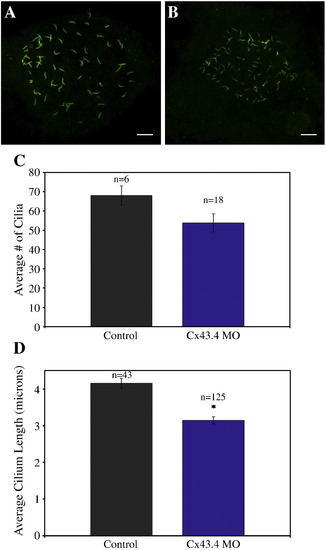|
KV cells are specified in Cx43.4 morphants, though ciliary defects exists. Confocal fluorescence imaging (A, B) of KV cilia labeled with acetylated tubulin antibodies. Scale bar = 10 microns. (A) Uninjected, control embryos have well-developed cilia in a circular pattern, while (B) Cx43.4 morphants have disorganized, smaller ciliated KVs. Multiple fluorescence images of 10-somite stage KVs labeled with acetylated tubulin antibiodies were analyzed using ImageJ software (C, D) and data were plotted as means ± SEM. (C) The average number of cilia per KV was similar between uninjected and Cx43.4 morphant embryos, p = 0.13. (D) The average cilium in Cx43.4 morphant embryos was significantly shorter than a wild-type cilium, ∗p = 3 x 10- 7.
|

